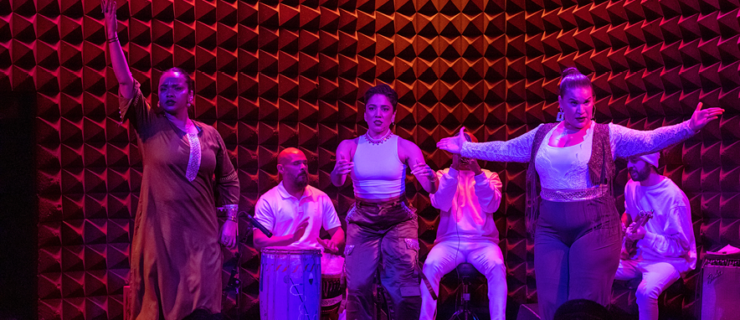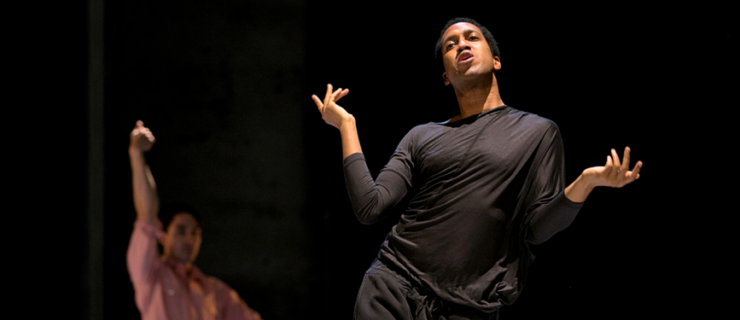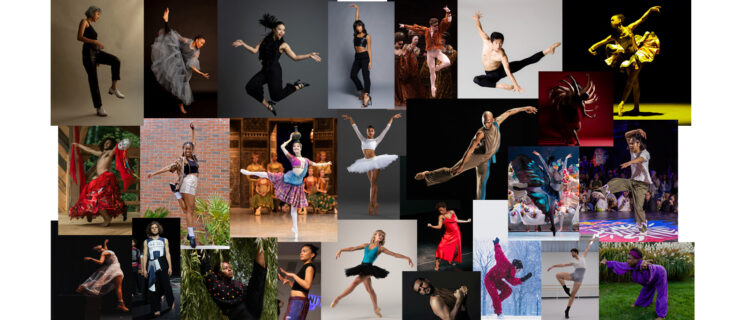Meet 9 DTH Alumni Who Continue to Spread Arthur Mitchell's Legacy
Every member of the Dance Theatre of Harlem family can recite co-founder Arthur Mitchell’s credo, “You represent something larger than yourself.” Whether consciously or not, they all move through the world accordingly. Mitchell often remarked that “I don’t have no dumb dancers,” and he took pride in the fact that after being at DTH, dancers could be successful in any field they entered.
Dance Magazine
checked in with nine alumni who are continuing the DTH legacy in their own ways.
Marcia Lynn Sells

DTH Tenure:
1976–79
Current position:
Dean of students at Harvard Law School
Sells began studying at DTH in its first summer program in 1970. After retiring from the company, she became assistant district attorney in Brooklyn and later was a vice president for the NBA and WNBA before joining Harvard Law School. Sells was instrumental in Columbia University’s 2015 acquisition of Mitchell’s archive.
“DTH is the model of understanding why pink tights and pointe shoes were meant for a white dancer’s line,” says Sells. “When Mr. Mitchell said, ‘We will dye them to match a dancer’s skin tone,’ he signaled that black ballerinas have a legitimate place in ballet. Reworking Giselle in Louisiana within the black community and reimagining Firebird on a Caribbean island made these stories ‘ours.’ ”
Melanie Person

DTH Tenure:
1977–88
Current position:
Co-director of The Ailey School and director of the Ailey/Fordham BFA program in dance
One of the “baby ballerinas”—she was an apprentice at 14—Person says Mitchell’s insistence on impeccable work ethic informs the standard she sets today at The Ailey School.
“DTH is still a role model for inviting others to see beyond their biases and to challenge restrictive mind-sets,” says Person.
Judy Tyrus

DTH Tenure: 1977–99
Current position:
Archivist and exhibition curator
When Mitchell asked Tyrus to co-curate the 2009 exhibition “Dance Theatre of Harlem: 40 Years of Firsts,” she told him she didn’t have any curating experience. He smiled and said, “You were a principal dancer. You have done much harder things.” Now a professional archivist, Tyrus assisted the National Museum of African American History and Culture with its “Taking the Stage” exhibition, which highlights the role of black artists in the performing arts.
“We were crafting something much more important than any one of us,” says Tyrus. “Everything we did onstage and off was scrutinized, so nothing could be disorderly or half-baked. We strived to be the best in every way.”
Tyrone Brooks

DTH Tenure:
1979–97
Current position:
Artistic director of The Tallahassee Ballet
A former principal dancer, Brooks became associate director of DTH’s Dancing Through Barriers Ensemble, then executive director of Virginia School of the Arts.
“Generations of dancers of all colors benefit from the dream of one man who had a vision of an inclusive ballet for all,” says Brooks.
Hughes Magen

DTH Tenure:
1982–94
Current position:
Owner of the Magen H Gallery
The French-born Magen had a legendary partnership with Virginia Johnson. And while still dancing, he began collecting mid-century French antiques. In 2017, his Magen H Gallery earned a spot in the prestigious European Fine Arts Fair. He was the only black gallerist represented.
“Mr. Mitchell’s message of ‘Once you get in it, you cannot give up’ is certainly prevalent for me,” says Magen. “I find myself in this world of art where I am the only black person at this level. I carry on the same message.”
Robert Garland

DTH Tenure:
1984–99
Current position:
DTH resident choreographer and school director
Garland’s choreography has been key in DTH’s redefinition and modern identity. His vocabulary, a portmanteau of neoclassical ballet and African-American social dance, flatters the dancers and satisfies audience expectations. Return and New Bach, favorites before the hiatus, have served the new iteration well, and 2012’s Gloria fits today’s generation.
“Arthur Mitchell showed me the legitimacy of black intellectualism,” says Garland. “While all the fanfare around his career and what he built was great, there was a great intellect behind it that sometimes gets glossed over.”
Alan Barnes

DTH Tenure:
1986–88
Current position:
Assistant to the director at Oper Frankfurt
Barnes left DTH after just two years to join William Forsythe’s Ballett Frankfurt. Currently at Oper Frankfurt, he oversees productions and sets operas around the world.
“We were a family—when we had problems we could talk about it, and if we had a triumph we all got to be a part of it,” says Barnes. “One of the best and worst moments was our Russian tour. We were ambassadors, dancing on those very important stages. I thought of us as black diamonds. Arthur was a showman, and he taught us how to really project, to get our message across from those huge prosceniums. I took that to Germany, and it was appreciated by my new boss.”
Kevin Thomas

DTH Tenure: 1995–2005
Current position:
Co-founder and artistic director of Collage Dance Collective
Thomas co-founded Collage Dance Collective in New York City, and relocated it to Memphis a year later. The company shares philosophical DNA with DTH: Its mission is to make ballet more accessible and relevant. It was by hiring Collage dancers that DTH had a big enough cast to present Dougla in 2018.
“Seeing a stage full of brown dancers was a powerful image for me,” says Thomas. “There was this great sense of pride that shaped everything that we did.”
Antonio Douthit-Boyd

DTH Tenure:
1999–2004
Current position:
Co-artistic director of dance at the Center of Creative Arts in St. Louis, Missouri
After DTH, Douthit-Boyd joined Alvin Ailey American Dance Theater. Today, he and his husband, Kirven Douthit-Boyd, co-direct dance at the fourth largest multidisciplinary community arts center in U.S.
“We had to grow up very fast under Mr. (that’s what we called him),” says Douthit-Boyd. “We had to speak with confidence and carry ourselves like the young kings and queens he envisioned.”




